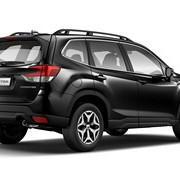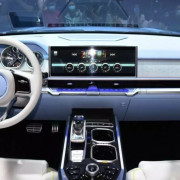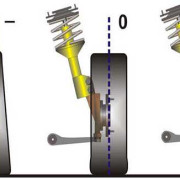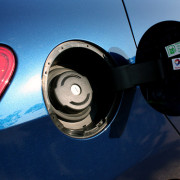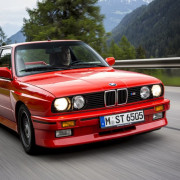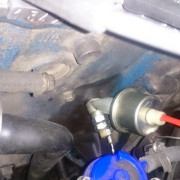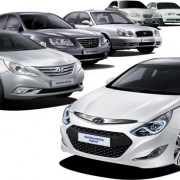Новый citroen ds9 e-tense: весь смак в задних указателях поворота
Содержание:
- Basic data analysis & Regions
- Роскошный флагман-седан будет представлен на Женевском автосалоне в марте
- Новый французский роскошный седан — DS9 также, как и многие другие новинки европейских автодомов был подготовлен к GIMS 2020.
- Summary
- Opening multiple images
- Basic use: opening and navigating an image
- Episodes
- Background information
- Технические характеристики
- Command line switches and scripting
- Презентация
Basic data analysis & Regions

Loading the catalog of 2MASS point sources near the Sombrero galaxy (green circles and table on right) and examining the radial profile of the Sombrero’s disk and bulge (below).
ds9 is chock full of advanced tools that you can use to analyze your data. I’ll just mention a few of my favorites here.
While you have your color mosaic up, let’s check the SDSS optical data against an infrared catalog. You would only expect the sources that are bright and red to show up in the infrared data. To automatically load the catalog of sources near the Sombrero galaxy from the Two Micron All Sky Survey (2MASS), go to Analysis > Catalogs > Infrared > 2MASS Point Sources. ds9 will automatically draw circles around all the infrared sources in your image and also open a table listing them. Click on an object in the table to pan over to it on the image. You could even download the actual image from 2MASS by going to Analysis > Image Servers > IPAC-2MASS
The circles ds9 has drawn are called “regions” and are a very powerful plotting tool. Draw your own regions by selecting the pointer tool from Edit > Pointer and then simply clicking and dragging over the image. You can go to Region > Shape to pick a different type of region. Region types include a variety of simple shapes, vectors (arrows), and text (so you can write labels).
One of the most useful region types is the “Projection.” Try it out by selecting it from Region > Shape > Projection and then clicking and dragging across a bright source. A new window will open displaying the brightness profile of the image along the line you drew. This is invaluable for taking a quick look at the point spread function of a star, the profile of a galaxy, or a spectrum of dispersed light that was recorded on a CCD chip.
Роскошный флагман-седан будет представлен на Женевском автосалоне в марте
В преддверии Женевского автосалона, который раскроет свои двери в самом начале марта, был представлен новый флагманский Citroën DS9 E-Tense. Модель является наследником легендарной иконы французского автопрома 1950-х годов: Citroën DS, Déesse, или «Богиня», как сразу переименовали новинку посетители Парижского автосалона 1955 года, превратив аббревиатуру DS в звучный восторженный эпитет. Расскажем об этой машине подробнее.
Тогдашняя премьера произвела фурор. Ситроен вел разработки в строжайшей тайне, скрывая до последнего и уникальную футуристическую внешность «Богини», и неординарные технические новинки, которые также способствовали ее признанию. Достаточно сказать, что к концу первого выставочного дня число желающих купить достигло 12 000! Впоследствии «Богиня» вошла в тройку лучших в конкурсе «Автомобиль века».
Внешность исторической модели настолько яркая, что сложно выделить что-то акцентное. Броский каплевидный силуэт, отсутствие заметной фронтальной решетки, укороченная корма. Бессменный стилист Ситроена итальянец Фламинио Бертони до последнего вносил изменения в дизайн.
Так практически накануне премьеры появился односпицевый руль управления и – вишенкой на торте – задние поворотные огни. Они разместились на верхнем ярусе кузова в небольших конических кожухах, выступавших из-под крыши. Поначалу их называли стаканчиками для мороженого, а с наступлением космической эры переименовали в ракетные сопла.
Вот эту деталь исторической модели современные разработчики «процитировали» в новом Citroën DS9 E-Tense. Впрочем, обошлось без объемных «стаканчиков»: трехмерные поворотники в хромированной отделке разместили непосредственно под крышей: лаконично, заметно, оригинально.
Исторические «переклички» читаются и на передней части. Капот выполнен в оригинальном узоре «Парижские гвозди» из пересекающихся перпендикулярно линий и имеет разделительную линию по центру. И это еще один «привет» из середины 1950-х, идеологически поддерживающий стилевые намеки и заимствования.
В остальном перед нами роскошный флагман, полный современных новаций
Обращает на себя внимание отделка просторного салона: обилие кожи, электрические сиденья с подогревом и массажем, масса водительских ассистов
В заключение пару слов о двигателях. Премиум-седан DS9 оснащается исключительно гибридными силовыми установками с линейкой мощностей от 225 до 360 л. с. Поначалу DS9 2020 будет доступен только с силовым агрегатом Puretech I в сочетании с электродвигателем с суммарной производительностью 225 л. с. Система агрегатируется 8-ступенчатой автоматической коробкой передач.
2020 Citroën DS9 E-Tense ориентирован прежде всего на Китай – целевой рынок роскошных седанов, затем, к концу года, появится в Европе.
Новый французский роскошный седан — DS9 также, как и многие другие новинки европейских автодомов был подготовлен к GIMS 2020.
DS9 критики посчитали не своевременным. Его двигатели предлагают мощности, которые мы больше не используем — 360 л.с. в перезаряжаемой гибридной версии E-Tense, сегодня слишком много?
-
Если интерьер был полностью обработан, чтобы обеспечить максимальный комфорт как передним, так и задним пассажирам, то, к сожалению, авто страдает от недостатка внешнего стиля, который с одной стороны и привлекателен. Однако молодой французский производитель приучил нас к оригинальным творениям, таким как DS5, выпущенный в 2011 году. НЛО, явно выделяющаяся на французском автомобильном ландшафте. Снижение крыши и кормы DS9, выглядит успешно, но его передняя сторона слишком классическая по своему дизайну и шеломляет в своих декоративных качествах.
-
Смешанный дизайн
Хромированные устройства, которые не дышат откровенной современностью, разбросаны по передней и задней части нового DS9. Только элегантная крыша «fastback» экономит пространство и придает автомобилю определенный динамизм, уравновешивая его линию.Хромированные стержни, которые визуально удлиняют задние фонари на крыльях, но их кажется слишком много, что эстетически не совсем радует, подобно аналогичным отражателям, которые устанавливают Kia Stinger на задние крылья.
-
Мощность до 360 л.с.
Эпоха французского высокого класса, оснащенного двигателями V6 на вершине модельного ряда, определенно закончилась. Производители теперь предпочитают небольшие четырехцилиндровые блоки с большими турбинами, часто в сочетании с электродвигателем, чтобы обеспечить экономию топлива и достойную производительность.Таким образом, DS9 E-Tense, самый мощный вариант, включает в себя бензиновый агрегат, соединенный с электродвигателем, для суммарной мощности 360 л.с. при 80 кВт (110 л.с.) и не менее 320 Нм крутящего момента. Бесшумная поездка возможна на скорости до 135 км / ч до того момента, как двигатель внутреннего сгорания проснется, чтобы обеспечить тягу на более высокой скорости.
-
Королевский комфорт
Интерьер особенно изыскан и включает в себя то, что характеризует современные модели DS. Баранка целиком обтянута тонкой кожей, даже крышка подушки безопасности сшита из кожи наппа. Сиденья с отделкой «ремешок для часов» по-прежнему эстетичны и идеально сочетаются с современным духом DS9.Для самых требовательных клиентов на задних сиденьях французский бренд задумался об установке оригинального центрального подлокотника со многими функциями, такими как регулировка обогрева, вентиляции и даже интенсивности массажного сиденья!
Summary
The Provisional Government of Bajor invites Starfleet to help them rebuild after the Cardassian Occupation. Commander Benjamin Sisko is selected to take command of their space station, formerly known as Terok Nor that is then designated by Starfleet as Deep Space 9. As part of the agreement between the Federation and Bajor, Starfleet will help them to become a member of the Federation.
The Federation involvement in the Bajor sector changes galactic history forever, as Starfleet discovers the Bajoran wormhole, the only stable wormhole known to exist, that leads to the largely unexplored Gamma Quadrant of the Galaxy.
The other crew of Deep Space 9 include Kira Nerys, functioning as the Bajoran liaison officer, Odo as the security chief of the station, Julian Bashir as chief medical officer, Miles O’Brien as the station’s chief of operations, and Jadzia Dax, a joined Trill as the station’s science officer.
Residents of the station include Quark, a Ferengi barkeeper, his brother Rom and Rom’s son, Nog. Benjamin Sisko’s son Jake and Miles’ wife Keiko O’Brien and daughter Molly O’Brien also live aboard the station. The most enigmatic station resident is the station’s tailor, Elim Garak, who has a mysterious past.
In their first year together, the crew are infected with an aphasia virus, visited by aliens who make the wishes and fantasies or fears of all station residents come true, meet a hunted species of aliens, known as Tosk and have an encounter with the omnipotent Q. Quark briefly becomes Grand Nagus, Lwaxana Troi visits the station, a Cardassian called Aamin Marritza tries to get his people to admit to the crimes they committed on Bajor, and the disappearance of Kai Opaka thrusts Bareil Antos and Winn Adami into the spotlight.
Opening multiple images
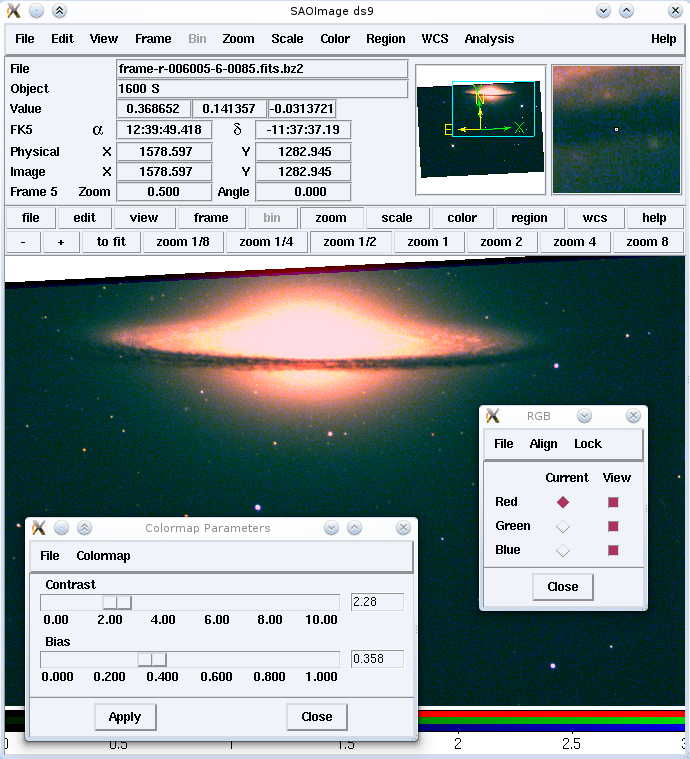
Playing with the colormap parameters of a color mosaic of the Sombrero galaxy with ds9.
Next let’s try opening multiple images at once. If the images all have WCS data, then we can match them up and compare them directly. There are all sorts of reasons you might want to do this: for example to compare images taken with different telescopes, at different times, or at different wavelengths (filters).
With your g-band image still open, download the SDSS u-band image of the Sombrero galaxy. Now go to Frame > New Frame. You can think of a frame in ds9 like a tab in a web browser – it’s just a container to open images in. With the new frame open, go to File > Open to open the u-band image you downloaded.
Navigate to a bright source in one of the two images you have open. Now match up the position of the two frames by clicking Frame > Match Frames > WCS. Now you can flip to the other image by typing Tab or going to Frame > Next Frame and you will be able to compare the same spot on the two images. If you need to, you can also match up the scale and colorbar of the two frames from the Frame menu. Alternatively, you could go to Frame > Tile Frames to see the images side by side or Frame > Blink Frames to rotate through them.
You should notice that the sources that are bright in the g-band image are dimmer in the u-band and that many faint sources are totally undetectable in the u-band. This is due to a combination of factors that conspire to make astronomical sources dim in the UV, which the u-band is just on the edge of, including atmospheric opacity, the sensitivity of CCDs, and the effective temperature of different sources.
If you download one more image, the r-band image, you can make a color mosaic! Go to Frame > New Frame RGB. A new frame should open, along with a popup window titled “RGB.” You use this window to essentially access the three subframes (R, G, and B) within this color frame. First click on the “Red” option in the popup and use File > Open to open the r-band image. Then click on “Green” and open the g-band, and then “Blue” and open the u-band. You’ll have to play with the colormap in each color frame to make something as pretty as the SDSS mosaic.
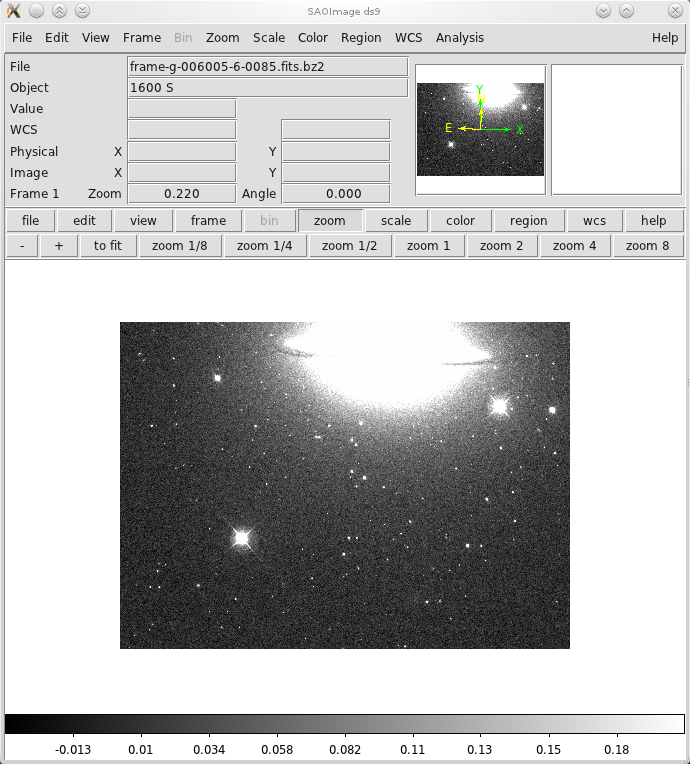
SAO ds9 dispalying the SDSS g-band image of the Sombrero Galaxy, zoomed to fit and displayed with ZScale.
First we’re just going to experiment with the basics of using ds9. These are simple tasks that astronomers use constantly to visually inspect images.
As a sample image, we’ll use the Sloan Digital Sky Survey‘s (SDSS) g-band image of the Sombrero galaxy (M104), which you can download here. Download this FITS image and open it via the File > Open menu item in ds9. You can go to File > Display FITS Header to learn everything you could ever want to know about how this SDSS image was made.
When you first open the image, you’ll be greeted by an almost totally black screen. This is because ds9 will by default show you the full range of the image – from the brightest to the dimmest point – all on a simple linear scale. Since the sky is mostly dark, almost every pixel will essentially be black. You’ll probably want to change the “lookup table” to something which will better show you the dynamic range of the image. You can do this using the Scale > ZScale menu option.
You can go to Scale > Scale Parameters… to see a histogram that will show you the exact brightness profile of the image. This histogram also allows you to constrict the display range so you can, for example, see the bright center of the Sombrero galaxy. Additionally, you can play with the colorbar by holding down the right mouse button and dragging the cursor.
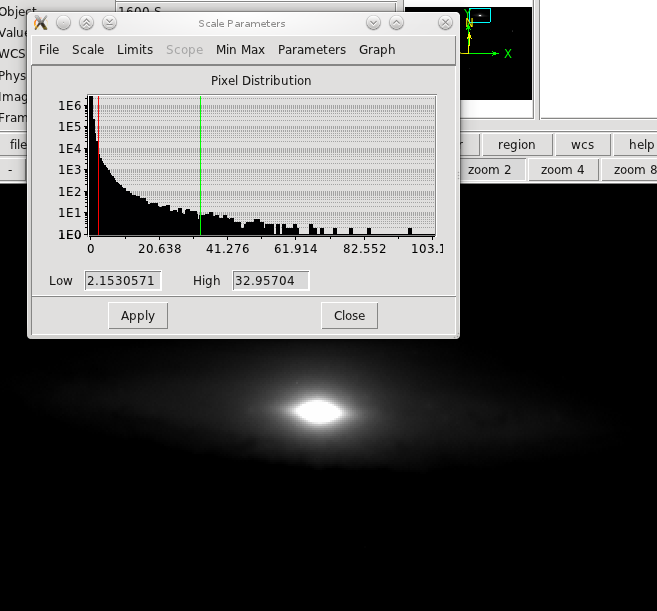
Using ds9’s scale parameters to constrain the display range of the image to highlight the bright center of the Sombrero galaxy.
You can tell that ds9 is only showing you a small portion of the image by the rectangle drawn in the finder window in the upper right corner of the screen. By default, it displays the image on a 1:1 pixel scale. If you want to see the whole image, go to Zoom > Zoom to Fit Frame. By the way, you can access all of the most common menu options like ZScale and Zoom to Fit from the “buttonbar,” which is the double row of buttons right above where the image is displayed.
To practice moving around an image, zoom back in by selecting Zoom > Zoom 1. You can recenter on any pixel in the image by clicking on it with the middle mouse button (either in the lower display pane or the small finder window above). Notice that when you mouseover any region in the image, a zoomed-in preview will be displayed in the upper-right corner of the screen.
When you move your cursor around, also notice that the current RA/DEC position of your cursor is displayed in the text boxes in the upper-left corner. Note that ds9 can only calculate these coordinates if your FITS image has a World Coordinate System (WCS) specified, as all the SDSS images do. In either case, ds9 will also display the pixel (x,y) coordinates.
Episodes
| Title | Episode | Prodno. | Stardate | Original Airdate |
|---|---|---|---|---|
| Emissary | 1×01/02 | 40511-721 | 46379.1 | -01-03 |
| Past Prologue | 1×03 | 40511-404 | Unknown | -01-09 |
| A Man Alone | 1×04 | 40511-403 | 46421.5 | -01-17 |
| Babel | 1×05 | 40511-405 | 46423.7 | -01-24 |
| Captive Pursuit | 1×06 | 40511-406 | 46477.5 | -01-30 |
| Q-Less | 1×07 | 40511-407 | 46531.2 | -02-06 |
| Dax | 1×08 | 40511-408 | 46910.1 | -02-13 |
| The Passenger | 1×09 | 40511-409 | Unknown | -02-20 |
| Move Along Home | 1×10 | 40511-410 | Unknown | -03-14 |
| The Nagus | 1×11 | 40511-411 | Unknown | -03-21 |
| Vortex | 1×12 | 40511-412 | Unknown | -04-18 |
| Battle Lines | 1×13 | 40511-413 | Unknown | -04-25 |
| The Storyteller | 1×14 | 40511-414 | 46729.1 | -05-02 |
| Progress | 1×15 | 40511-415 | 46844.3 | -05-09 |
| If Wishes Were Horses | 1×16 | 40511-416 | 46853.2 | -05-16 |
| The Forsaken | 1×17 | 40511-417 | 46925.1 | -05-23 |
| Dramatis Personae | 1×18 | 40511-418 | 46922.3 | -05-30 |
| Duet | 1×19 | 40511-419 | Unknown | -06-13 |
| In the Hands of the Prophets | 1×20 | 40511-420 | Unknown | -06-20 |
Background information
Reception
- Production staff have admitted that the first season of DS9 was somewhat lacking in direction. According to co-creator and executive producer Michael Piller, «When you look at the first season of Deep Space Nine, essentially what I think you see is our intention to do stories that bring in fans of The Next Generation. If you create a space station that is at the crossroads of the universe, then you basically have the justification for bringing in old friends from past episodes. Their ships would normally come through this crossroads, and we felt that was a good way to bring viewers to the show. I think by the second season, we were looking more at standing on our own two feet, and we hadn’t been entirely satisfied. When we really started doing stories about our space station, and really made it unique to itself, that’s when the series, I think, really became special.» (New Frontiers: The Story of Deep Space Nine, DS9 Season 2 DVD, Special Features) Ira Steven Behr commented, «There are things I find weak about some of these shows that have nothing to do with the writing. Many of the shows at the beginning of the season lacked pacing.» (Captains’ Logs Supplemental — The Unauthorized Guide to the New Trek Voyages, p. 42)
- Piller also explained, however, that the first season was something of a training exercise for the writers; «I think that when you have a wonderful group of actors, you learn how to write for them in the first season. Every show has a shake-down period during the first season, and Deep Space Nine was no different. But I can tell you that we learned so many things as we got to know our actors.» (New Frontiers: The Story of Deep Space Nine, DS9 Season 2 DVD, Special Features)
- Rick Berman was pleased with the season, particularly compared to the first season of Star Trek: The Next Generation. Berman commented, «I’m very pleased with the way the first season has gone in a lot of respects. First seasons of television shows tend to be potentially very chaotic. The first season of Next Generation certainly was. This season has been very peaceful in terms of the actors, the crew, the writers and the budgets. As far as the episodes, there are things about them that I love and things about them I don’t love. That’s the way it is, if we were completely satisfied with what we did, we wouldn’t be doing what we do. We’re always looking to make things better. What I’m most pleased with is the fact that the concept is working and we’ve managed to create 20 stories that I think all hang pretty well on the armature that we’ve built, the backstory and the characters.» (The Deep Space Log Book: A First Season Companion, p. 7)
- Behr commented:»I really liked the pilot. I thought the pilot gave us a great jumping-off point. But part of the frustration was the pilot really worked and now we’re doing this scattershot kind of technique in season one, where we seem to be scrambling all over the place, trying to find our identity. And the identity was firmly established in the pilot, so why are we looking to change that, or go in other directions? Let’s just follow the path that was laid out in the pilot. Why are we deviating and trying to go back in time or go back to «The Next Generation»? The pilot wasn’t «TNG,» why are we trying to do episodes that could easily be adapted for «TNG»? It was just finding our mojo, which we found towards the end of season one«.
Trivia
- This season was broadcast concurrent with Star Trek: The Next Generation Season 6.
- Gene Roddenberry was well aware of the concept of DS9 before his death so this was the last Star Trek series with which he was connected.
- Characters who ‘crossover’ from TNG include Miles O’Brien (as a main character), Jean-Luc Picard (also as Locutus) in «Emissary», Lursa and B’Etor in «Past Prologue», Keiko O’Brien & Molly O’Brien as recurring characters from «A Man Alone», Q and Vash in «Q-Less», and Lwaxana Troi in «The Forsaken».
- Many important recurring characters make their first appearances in this season, including Gul Dukat («Emissary»), Nog («Emissary»), Rom («Emissary», first named in «A Man Alone»), Morn («Emissary», first named in «Vortex»), Elim Garak («Past Prologue»), Zek («The Nagus»), Maihar’du («The Nagus»), Winn Adami («In the Hands of the Prophets») and Bareil Antos («In the Hands of the Prophets»).
Технические характеристики
Модель «9» основана на модульной технической платформе EMP2 от группы PSA в ее самой длинной версии, которая используется, в частности, его двоюродным братом Peugeot 508 L с колесной базой 2900 мм . DS9 — это четырехдверный семейный седан с крышкой багажника, который отличается от 508 дверными коробками.
Дизайн
Внутри приборная панель во многом вдохновлена панелью DS 7 Crossback с информационно-развлекательным экраном размером до 12 дюймов.
Моторизации
| PureTech | PureTech Hybrid | ||
|---|---|---|---|
| Мотор | 4 цилиндра | ||
| Смещение | 1598 см 3 | ||
| максимальная мощность | 225 л.с. при 5500 об / мин |
225 кумулятивных л.с. |
360 кумулятивный л.с. |
| Максимальный крутящий момент | 300 Н · м при 1900 об / мин | 310 Н · м суммарная |
520 Н · м суммарная |
| Коробка передач | EAT8 | ||
| максимальная скорость | 236 км / ч | 240 км / ч | 250 км / ч |
| 0- 100 км / ч | 8,1 с | 8,3 с | |
| Расход (л / 100 км) | 6.9 | 1.5 | 1,8 |
| Выбросы CO 2(в г / км) | 155 | 33 | 41 год |
Седан DS разделяет некоторые двигатели со своим техническим кузеном, Peugeot 508 второго поколения, за исключением дизельных двигателей, от которых он отказывается.
Таким образом, он унаследовал четырехцилиндровый бензиновый двигатель PureTech 1.6 с турбонаддувом мощностью 225 л.с. и подключаемые гибридные версии, которых существует три. Первый сочетает в себе бензиновый двигатель 1.6 PureTech мощностью 180 л.с. и электродвигатель мощностью 80 кВт ( 110 л.с. ), интегрированный в 8-ступенчатую автоматическую коробку передач, с суммарной мощностью 225 л.с., что обеспечивает запас хода от 40 до 50 км. в электрическом. Второй развивает 250 л.с. и имеет автономность 50 км . Последний — копия Peugeot 508 Sport Engineered с мощностью 360 л.с. и полным приводом. В трех подключаемых гибридных версиях используется литий-ионный аккумулятор емкостью 11,9 кВтч .
Command line switches and scripting
All of the functions described above are extremely useful for interactively examining data, but it’s also possible to automate (script) actions in ds9. The simplest way is to pass command line options to ds9 when you first load it. You can also use the XPA messaging system (or its python interface) to pass commands to an open instance of ds9.
Of course, some of ds9’s most powerful and frequently-used functionality comes from its capacity as a display server for IRAF. ds9 can also interact with the table management software TOPCAT.
ds9 is primarily developed by the amazing Bill Joye here at the Harvard-Smithsonian Center for Astrophysics. The source code for ds9 is freely available.
About Nathan Sanders
I am one of the members of the team that founded Astrobites in 2010 and a co-founder of ComSciCon, the Communicating Science Workshop for graduate students. I earned my Ph.D. in astronomy at Harvard University in 2014, focusing on observations of supernovae and their host galaxies; investigating how massive stars explode and enrich the interstellar medium. I did my undergraduate work at Michigan State University.
Презентация
Первоначально DS 9 (внутренний код X83) должен был быть представлен в апрель 2019по случаю автосалона в Шанхае, но его презентация была впервые перенесена в ноябре на автосалон в Гуанчжоу в Китае, а затем во второй раз домарт 2020. После закрытия совместного предприятия Changan PSA Automobiles (CAPSA) PSA и Baoneng, которые приобрели завод в Шэньчжэне, где производятся китайские DS, достигли соглашения о производстве DS (включая предстоящий DS 9) в Шэньчжэне.
то 20 февраля 2020 г., DS объявляет о скорой презентации новой модели. Это DS 9, представленная на27 февраля 2020 г. прессе, и которая должна была впервые появиться на 3 марта 2020 г.во время 90- го автосалона в Женеве в Швейцарии. Однако его отменили из-за эпидемии коронавируса COVID-19 . DS9 официально продается с10 августа 2020 г. в Китае и весной 2021 года в Европе.
В отличие от 7 Crossback, который производится как во Франции, так и в Китае, 9 от DS Automobiles собирается только в Китае компанией Baoneng на своем заводе в Шэньчжэне .

